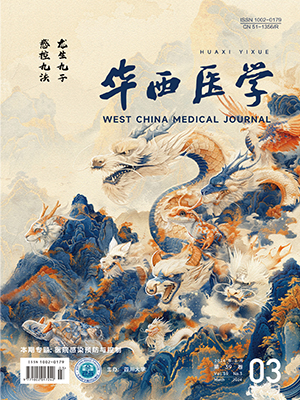| 1. |
郝翔宇, 耿晨皓. 城市社区基本公共卫生服务均等化研究. 合作经济与科技, 2022(19): 167-169.
|
| 2. |
邓小冬, 王廷宏, 向明亮, 等. 新冠病毒感染“乙类乙管”背景下构建医患命运共同体的思考. 现代医院, 2023, 23(5): 772-775.
|
| 3. |
董恩宏, 严越, 解亚丽, 等. 我国卫生资源配置区域差异化程度及空间分布趋势研究(2009-2020 年). 中国卫生政策研究, 2022, 15(6): 73-79.
|
| 4. |
王艳, 郭云, 邱旭. 我国卫生资源配置研究进展. 河北联合大学学报(医学版), 2013, 15(1): 120-121.
|
| 5. |
庄蕾, 郑睿智, 高卫益. 某独栋办公楼内新型冠状病毒奥密克戎株聚集性疫情分析. 诊断学理论与实践, 2022, 21(2): 150-153.
|
| 6. |
蔡虻, 刘聚源. 城市或地区聚集性疫情中医院感染风险及防控措施的探讨. 华西医学, 2022, 37(3): 326-329.
|
| 7. |
黄菊, 杨坚娥, 黄少君. FMEA 风险评估法在 ICU 多重耐药菌医院感染防控中的应用. 中国感染控制杂志, 2019, 18(11): 1079-1083.
|
| 8. |
Lu Y, Li Y, Zhou H, et al. Affordable measures to monitor and alarm nosocomial SARS-CoV-2 infection due to poor ventilation. Indoor Air, 2021, 31(6): 1833-1842.
|
| 9. |
余凤娇, 熊梅玲, 夏敏. 走廊加床患者的医院感染管理. 中华医院感染学杂志, 2013, 23(4): 894.
|
| 10. |
高志坤, 杜凤芹, 郑继文. 手卫生控制对 ICU 医院感染的影响. 中国消毒学杂志, 2009, 26(5): 576-577.
|
| 11. |
蔡玉洁, 郑丽娜, 董佳宜, 等. 后疫情时代集中式日间诊疗管理模式感染控制对策. 中国消毒学杂志, 2022, 39(6): 476-478.
|
| 12. |
李六亿, 巩玉秀, 王力红, 等. 病区医院感染管理规范 WS/T 510-2016. 中国感染控制杂志, 2017, 16(3): 289-292.
|
| 13. |
中华人民共和国卫生部. 医疗机构消毒技术规范: WS/T 367-2012. 北京: 中国标准出版社, 2012.
|
| 14. |
Peters A, Schmid MN, Parneix P, et al. Impact of environmental hygiene interventions on healthcare-associated infections and patient colonization: a systematic review. Antimicrob Resist Infect Control, 2022, 11(1): 38.
|
| 15. |
马小丽, 曹登碧, 闫小霞. 长期过道加床存在的安全隐患及防范措施. 全科护理, 2014(16): 1510-1511.
|
| 16. |
Bäumler W, Eckl D, Holzmann T, et al. Antimicrobial coatings for environmental surfaces in hospitals: a potential new pillar for prevention strategies in hygiene. Crit Rev Microbiol, 2022, 48(5): 531-564.
|
| 17. |
Carling PC, O’Hara LM, Harris AD, et al. Mitigating hospital-onset Clostridioides difficile: the impact of an optimized environmental hygiene program in eight hospitals. Infect Control Hosp Epidemiol, 2023, 44(3): 440-446.
|
| 18. |
Gon G, Kabanywanyi AM, Blinkhoff P, et al. The Clean pilot study: evaluation of an environmental hygiene intervention bundle in three Tanzanian hospitals. Antimicrob Resist Infect Control, 2021, 10(1): 8.
|
| 19. |
《WHO 真菌重点病原体感染实验诊断与临床治疗》由上海科学技术出版社出版发行. 新发传染病电子杂志, 2023, 8(5): 35.
|
| 20. |
梁朋, 钱水英, 陈海为, 等. 综合 ICU 气管插管患者口咽清洁度与真菌定植分析. 中国医药导报, 2014, 11(2): 53-56.
|
| 21. |
张金萍, 左云峰, 张翠林, 等. 人员密集型场所细菌真菌气溶胶冬季分布特征及健康影响分析. 建筑科学, 2023, 39(4): 213-220, 251.
|




